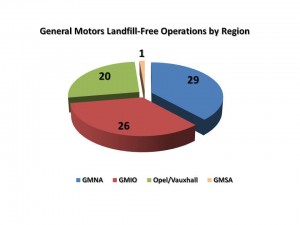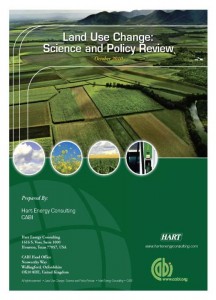Private funds have been difficult to secure in the U.S. for clean energy programs for the past year; however, on a global scale, private investments in G-20 clean power projects could total more than $2.3 trillion by the end of this decade alone. This figure was released as part of a new report from the Pew Charitable Trusts this month: Global Clean Power: A $2.3 Trillion Opportunity. The majority of investments will be made in Asia, led by China and India, as driven by massive energy demand and strong clean energy policies. However, the report continues, by countries adopting such policies, every G-20 member has an opportunity to attract more private funds in clean power projects and compete more effectively for business.
 The report examined projected private investment in wind, solar, biomass/energy from waste, small hydro, geothermal and marine energy projects. To predict the levels of private investments into projects, the report modeled three policy scenarios to determine future growth through 2020:
The report examined projected private investment in wind, solar, biomass/energy from waste, small hydro, geothermal and marine energy projects. To predict the levels of private investments into projects, the report modeled three policy scenarios to determine future growth through 2020:
- * Business-as-usual – no change from current policies: total investment projected to be $1.7 trillion by 2020
- * Copenhagen – policies to implement the pledges made at the 2009 international climate negotiations in Copenhagen: total investment projected to be $1.8 trillion
- * Enhanced clean energy – maximized policies designed to stimulate increased investment and capacity additions – total investment projected to be $2.3 trillion
“The message of this report is clear: countries that want to maximize private investments, spur job creation, invigorate manufacturing and seize export opportunities should strengthen their clean energy policies,” said Phyllis Cuttino, director of the Pew Climate and Energy program.
The report found that the clean energy sector continues to be an immense economic opportunity and Asia became the top regional destination for clean power finance in 2010. Within the region, China and India are leading the way (in all energy demand, not just clean energy demand) and by 2020, the report anticipates that 40 percent of global clean power project investments will be made in China, India, Japan, and South Korea.
Michael Liebreich, CEO of Bloomberg New Energy Finance, the company that compiled the underlying data for the report said, “Strong and consistent policies in Asia have helped double private investment over the past two years. Asia is now the leading region for clean energy investment, and its lead is set to extend in the near future unless Europe and the US make a step change in their support for the sector.”
While the U.S. is currently lagging far behind in private investments in clean energy, the report found that they are among those with the most to gain from passing strong clean energy policies. The report cites an example that says the U.S. has the potential to attract $342 billion in clean power project investments over the next 10 years under the Enhanced clean energy scenario.
You can download a copy of Global Clean Power: A $2.3 Trillion Opportunity here.


 Extending the Volumetric Ethanol Excise Tax Credit (VEETC) is estimated to cost about $6 billion dollars in 2011 at the current rate in the Senate bill of 45 cents per gallon. The United States spends about $750 million per day on imported oil, or $5.25 billion per week. Which means, extending the VEETC through 2011 would be the equivalent to about one week’s worth of oil imports – eight days, to be precise.
Extending the Volumetric Ethanol Excise Tax Credit (VEETC) is estimated to cost about $6 billion dollars in 2011 at the current rate in the Senate bill of 45 cents per gallon. The United States spends about $750 million per day on imported oil, or $5.25 billion per week. Which means, extending the VEETC through 2011 would be the equivalent to about one week’s worth of oil imports – eight days, to be precise.







